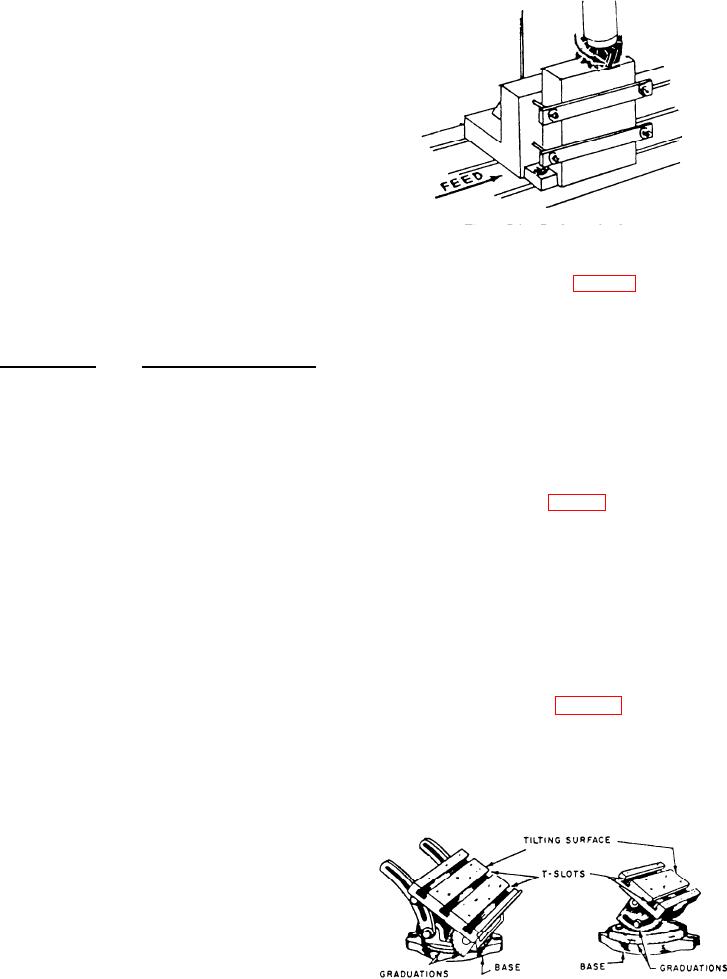
However, small arbor supports can provide support
only at the extreme end of the arbor. For this reason
they are not recommended for general use. Large
arbor supports can provide support near the cutter, if
necessary.
NOTE: Before loosening or tightening the arbor
nut, you must install the arbor support. This will
prevent bending or springing of the arbor.
MACHINE DESIGNATION: All milling machines
are identified by four basic factors: size, horsepower,
model, and type. The size of a milling machine is
based on the longitudinal (from left to right) table
Figure 7-9.--Right-angle plate.
travel in inches. Vertical, cross, and longitudinal
travel are all closely related as far as overall capacity
is concerned. For size designation, only the longi-
toolmaker's universal vise (fig. 7-8). The flanged
tudinal travel is used. There are six sizes of knee-type
vise provides the most support for a rigid workpiece.
milling machines, with each number representing the
The swivel vise is similar to the flanged vise, but the
number of inches of travel.
setup is less rigid because the workpiece can be
swiveled in a horizontal plane to any required angle.
Standard Size
Longitudinal Table Travel
The toolmaker's universal vise provides the least rigid
support because it is designed to set up the workpiece
No. 1
22 inches
at a complex angle in relation to the axis of the spindle
No. 2
28 inches
and to the surface of the table.
No. 3
34 inches
RIGHT-ANGLE PLATE
No. 4
42 inches
The right-angle plate (fig. 7-9) is attached to the
table. The right-angle slot permits mounting the
No. 5
50 inches
index head so the axis of the head is parallel to the
No. 6
60 inches
milling machine spindle. With this attachment you
can make work setups that are off center or at a right
If the milling machine in your shop is labeled No.
angle to the table T-slots. The standard size plate
2HL, it has a table travel of 28 inches; if it is labeled No.
T-slots make it convenient to change from one setting
5LD, it has a travel of 50 inches. The model designation
to another to mill a surface at a right angle.
is determined by the manufacturer, and features vary
with different brands. The type of milling machine is
TOOLMAKER'S KNEE
designated as plain or universal, horizontal or vertical,
and knee and column or bed. In addition, machines may
The toolmaker's knee (fig. 7-10) is a simple but
have other special type designations.
useful attachment used to set up angular work, not
Standard equipment used with milling machines
in Navy ships includes workholding devices, spindle
only for milling but also for shaper, drill press, and
attachments, cutters, arbors, and any special tools
grinder operations. You mount a toolmaker's knee,
needed to set up the machines for milling. This
which may have either a stationary or rotatable base,
equipment allows you to hold and cut the great variety
of milling jobs you will find in Navy repair work.
WORKHOLDING DEVICES
The following workholding devices are the ones
you will probably use most frequently.
VISES
The vises commonly used on milling machines
FIgure 7-10.--Toolmaker's knees.
are the flanged plain vise, the swivel vise, and the
7-7

